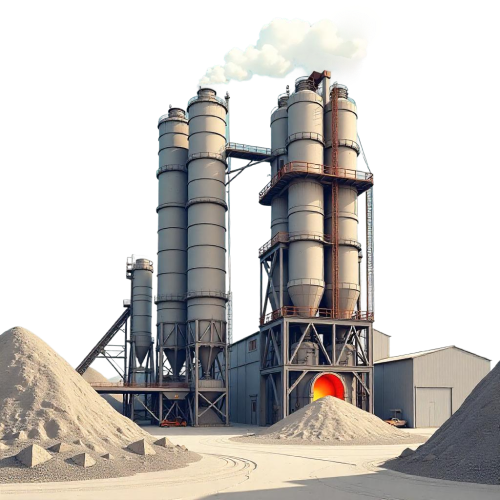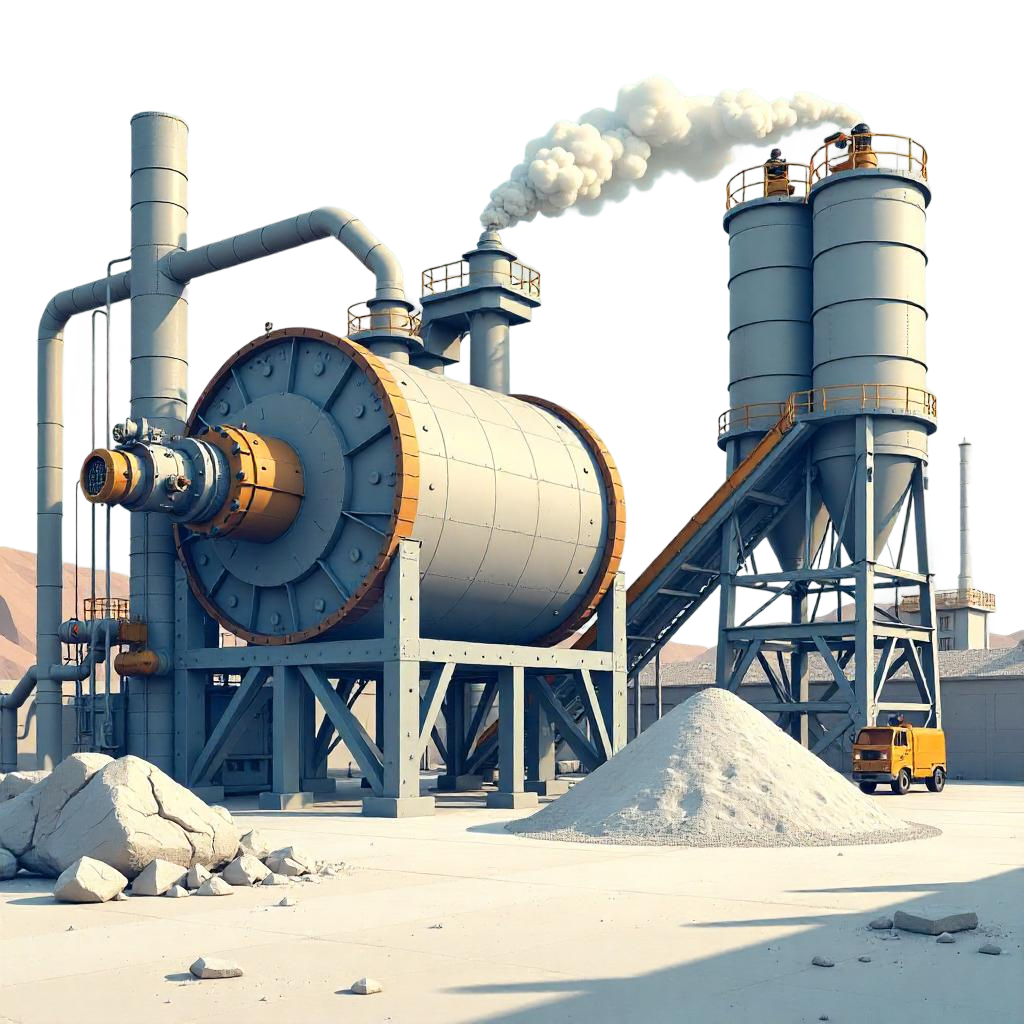
AADI Cement, a leading cement manufacturer in India, follows a highly efficient and sustainable process to produce high-quality cement. The company's manufacturing process is built around modern technology and a commitment to environmental sustainability.
Materials: Limestone (primary raw material), clay, and other minerals. Extracted from mines or quarries.

Crushing: Limestone is crushed into smaller pieces.
Mixing & Grinding Crushed limestone is mixed with clay and ground into a fine powder called raw meal.

The raw meal is preheated in a preheater tower to remove moisture and prepare it for the kiln.

The preheated raw meal is fed into a rotary kiln.
High Temperature : 1400–1450°C.
Chemical Reaction : Raw meal transforms into clinker (small, hard pellets) through a process called calcination.

The hot clinker is cooled quickly in a cooler to retain its quality and prepare it for grinding.

Clinker is ground into a fine powder in ball mills.
Additives : Gypsum (to control setting time) and other materials (for specific cement types) are added.
The result is cement.

The finished cement is packed in bags or bulk containers and transported to dealers or directly to construction sites.
